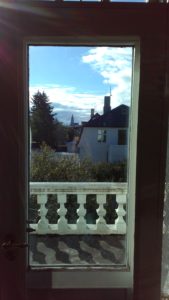Yesterday evening I arrived in Iceland.
I’d landed on Iceland a few times before over the years, stopping only for several hours at the Keflavík airport on my way to visit family in Sweden. I’d seen the landscape from my tiny airplane window, and I remember thinking of the place as dry, flat, and rocky– an ever-so-slightly greener kind of moonscape.
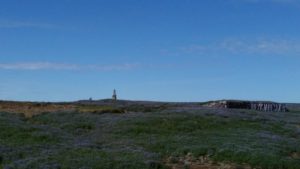
I’ve also read a lot about Iceland. As a student of Medieval Literature, and of Northern European Medieval Literature more particularly, I’ve read many of what are known as the “Sagas of Icelanders.” These texts are largely concerned with the settlement period of Iceland until its conversion to Christianity, telling much about the lives, deaths, and culture of the early settlers. From these old stories I’ve gained a sense of how many places in Iceland received their names many centuries ago, and I’ve imagined what the places must have looked like when the great saga heroes like Grettir the Strong and Egill Skallagrímsson inhabited them.
Unfortunately, I have not yet read a contemporary novel in Icelandic (hopefully this language program will enable me to do so!). However, I still wanted to get a sense of Iceland through modern literature before departure. The week before I embarked, I took some time to read Jules Verne’s 19th century novel A Journey to the Center of the Earth. Verne’s narrator (Harry) describes a bleak and uninviting landscape which can be traversed only with some discomfort. The novel casts Iceland’s grand Snæfellsjökul- a volcano I plan to visit later this month- as the point of entry to the earth’s core. [Fun fact: Another Icelandic volcano, named Hekla, was referred to as the “Gateway to Hell” by some medieval authors and early modern mapmakers.] I wonder- what will my experience of Iceland’s volcanoes entail?
All this is simply to say that my literary experiences of Iceland, as well as my very limited actual experience of the place, did not prepare me for what I found upon arrival, especially the greenery and trees. My bus ride from Keflavík to Reykjavík revealed a landscape which, though generously sprinkled with rocks, also yielded fields of beautiful purple flowers. When I arrived in Reykjavík itself, I found that the joke I’d first heard a few years ago (Q: “How do you find your way when lost in an Icelandic forest?” A: “Stand up”) was simply not true of the city. Admittedly, to call Reykjavík a highly forested place would be misleading, but it is a charming place not only blessed with gorgeous views of grand mountains and broad expanses of water but with lovely green trees. I knew Iceland would be a strikingly beautiful place, but I did not expect this particular kind of beauty.
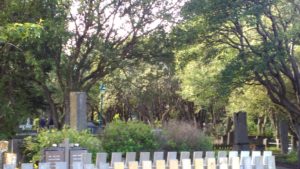
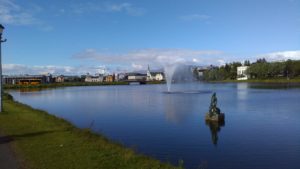
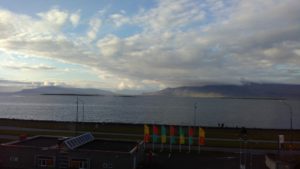
As I’ve only today had the first Modern Icelandic class, I can’t say that my Icelandic is so far something worth writing home about. But Iceland certainly is worth writing home about, and I’m not surprised that it is becoming one of the most popular tourist destinations in the world. I am looking forward to spending the next month or so in this fascinating place and to learning its beautiful language.
